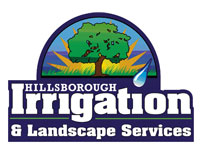Maintaining Your Landscape’s Drainage Installations
Landscape drainage solutions are great assets for any homeowner, as long as you take care of them. Drains keep water from pooling up in your yard, but if you let them malfunction or clog up they won’t be able to do their job. This can result in pools of water building up in your landscape, which could lead to infestations,
particularly from mosquitos.
To make sure your landscape drains continue to operate as they should, you should perform routine maintenance. Here’s what you should do.
Clear Out Leaves & Loose Debris

A common cause for drainage system malfunctions is debris clogging up the pipes or drains. Leaves, twigs, rocks, and other items are small, so it’s possible for them to fall into the drain and block up the system. While this is a prominent issue in the fall, issues like this can happen at any time of year, so you should regularly clean your drains to avoid clogs.
To do this, you need to locate the areas where the water enters the drainage system. Open up the covers, and reach in to grab debris that’s sitting inside. Make sure to use gloves while doing this so you don’t hurt yourself. To grab any items that are deeper within the pipes, you can use a shop vacuum to suck them up.
If you have a gutter system, you need to make sure that you’re clearing that of debris as well. By clearing out the debris, you can avoid clogs and keep your landscape dry.
Check the Termination Area

Source: Wikimedia Commons
If you’re using a catch basin or a similar type of storm drain, it’s important that you check out the termination area. This is the point where the drainpipes empty out, usually near the curb out by the street. To ensure that your drainage solution is properly removing water from your landscape, you’ll need to make sure that debris hasn’t built up at this spot.
Like with cleaning the pipes, you can use your hands or a vacuum to clear out any items stuck in the way. If you needed to open a grate to do this, make sure you install it back in place once you’re done removing the debris.
If your system deposits into a dry well, open it up and check the exit points for loose items. Allowing water to back up in the pipes can lead to serious damage for your plants and lawn, so be sure to clean things up every few weeks or so.
Flush the Pipes


Once you’ve cleaned the pipes of loose debris, you should take some time to flush out the drains with water. Even if you’ve picked up all the big debris, there may be some smaller items lingering deep in the pipes. Pushing a stream of water through the pipes can help knock a few of these items loose.
Put the hose in as far as you can, and turn it on so the water can flow through. If you don’t want to do this yourself, you may want to think about working with a professional landscaper. Landscapers have powerful equipment that can help you flush the pipes without damaging the drain system or your yard.
Inspect Pipes & the Landscape Frequently

It would also be wise for you to inspect your drainage solution every week or so. Even if your drains are working fine at the moment, you never know when something could go wrong. You should check areas near the drainage system from time to time to see if you can find any abnormalities.
By doing frequent inspections, you can catch major issues before they cause you headaches in the future. For example, you might spot a wet patch in your lawn, which could be the result of a crack in the pipes below the ground. By catching the issue early, you can call a landscaper and correct the issue before it increases in severity.
This is crucial during rainy seasons, since your drains will be working overtime to remove the excess rainwater.
Having trouble with your drainage system? Hillsborough Irrigation and Landscape Services can help you get things back on track.
